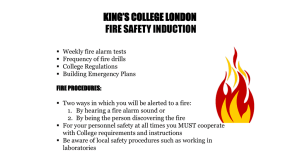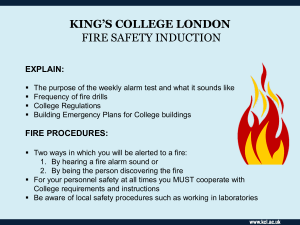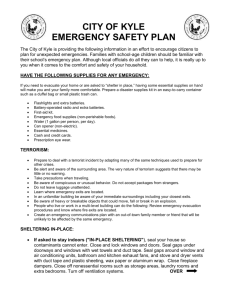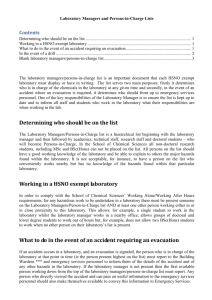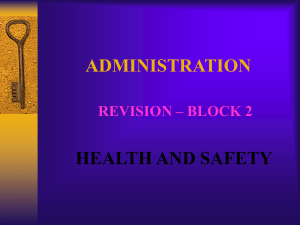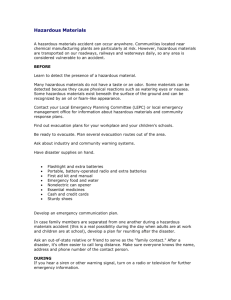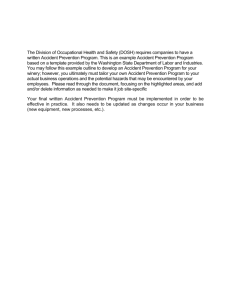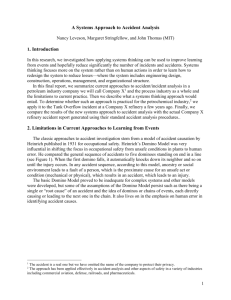Sweden_Vote_and_comments_Business_Resilience
advertisement
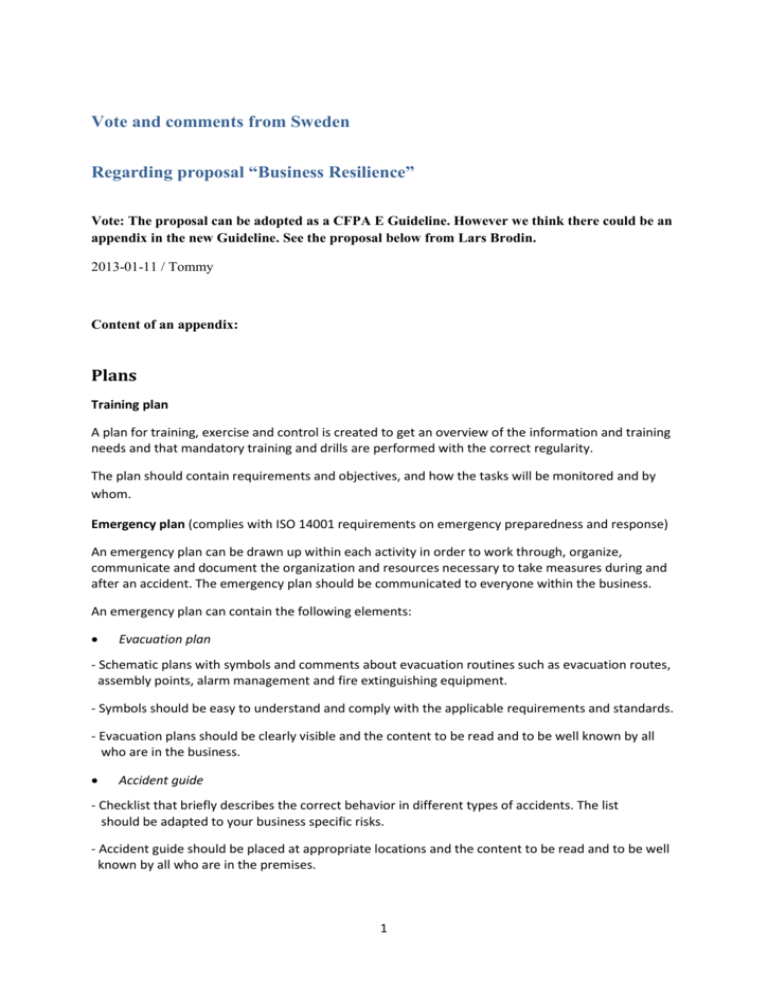
Vote and comments from Sweden Regarding proposal “Business Resilience” Vote: The proposal can be adopted as a CFPA E Guideline. However we think there could be an appendix in the new Guideline. See the proposal below from Lars Brodin. 2013-01-11 / Tommy Content of an appendix: Plans Training plan A plan for training, exercise and control is created to get an overview of the information and training needs and that mandatory training and drills are performed with the correct regularity. The plan should contain requirements and objectives, and how the tasks will be monitored and by whom. Emergency plan (complies with ISO 14001 requirements on emergency preparedness and response) An emergency plan can be drawn up within each activity in order to work through, organize, communicate and document the organization and resources necessary to take measures during and after an accident. The emergency plan should be communicated to everyone within the business. An emergency plan can contain the following elements: Evacuation plan - Schematic plans with symbols and comments about evacuation routines such as evacuation routes, assembly points, alarm management and fire extinguishing equipment. - Symbols should be easy to understand and comply with the applicable requirements and standards. - Evacuation plans should be clearly visible and the content to be read and to be well known by all who are in the business. Accident guide - Checklist that briefly describes the correct behavior in different types of accidents. The list should be adapted to your business specific risks. - Accident guide should be placed at appropriate locations and the content to be read and to be well known by all who are in the premises. 1 Alarm List - List with names and telephone numbers of managers, supervisors, maintenance contacts and other competences to be contacted in an accident. - The list should be readily available and well known to people who are expected to carry out the protection. List of emergency actions - Checklist of emergency actions, brief descriptions of what needs to be done in the event of an accident such as emergency-stop, alarm buttons, start of emergency systems, barriers, risk information, etc. - List should be readily available and known to the site staff. Priority salvage - List of important assets in priority order. Such as unique machines, tools, drawings, stored information, spare parts, etc. - List should be easily accessible and be presented to the rescue service or other responsible person. - The list can be considered as confidential information and will not be disseminated to unauthorized people. Startup plan A plan is created with check lists to easily verify that all necessary measures are taken in the acute phase of the emergency plan to get started with the recovery of the business. These checklists can vary depending on the type of event. The list shall be available in crisis management room and be used at crisis management meeting. Caretaking plan A plan is created to quickly be able to take care of the damaged activities. The aim is to rapidly put in resources to deal with the personnel involved as well as rehabilitate and save the environment, equipment and buildings. This is to minimize the downtime, prevent rumors and reduce secondary damage. - List of neighbors, authorities, mass media and internal operations that are affected and need information about what happened. - List of specialist expertise to take care of expected damage (including mental and physical health of personnel). - List of expected materials for decontamination. - Template/responsibilities of security procedures for staff at the site of the accident. - Emergency routine for priority salvage. Back-up plan A back-up plan is created based on how the activities shall be carried out during time of recovery. What is damaged and what can be used of existing resources? What are the alternatives and what is 2 most important? The aim is to operate all or part of the activities during recovery to normal operations. - A good basis is an existing risk analysis which may provide information about the measures proposed at an expected accident. Even weak links (critical elements) in the activity can be seen and possibly where and how businesses can be operated at a loss of function. - Can a change be made of the utilization of other activities within the company, for example, changing shifts and the use of machinery in a different way? - Can logistics be changed, for example by alternate torrents? - Check for external options outside the company? Who has the capacity and the method? Is it approved? Recovery plan A recovery plan describes the activity to recover to normal operation? It is essential in long-term aspects and requires good decisions to get a quick and cost effective solution and a short downtime. - Create a list (instructions) on vital resources, premises, control devices, etc. - Create a list (instructions) of possible suppliers of equipment and spare parts. - Create a plan to manage time-critical resources such as carrying contract, back-up agreements, etc. - Create a template for procurement routines and approvals (permits) to reduce downtime. - Review the need of developing and improvement of the business and product. Checklists The emergency plan's various parts taken into consideration? Evacuation Assembly points Alarm Management Emergency actions Support to the rescue service Internal information Occupational health care and needs of staff Priority salvage Orders and information Tasks to be allocated Management: Decide on crisis management room Call management team and other selected Organize the emotional support center Contact the insurer Decisions about the priority of different actions Assign someone to survey, the helicopter view 3 Use of all the elements in the plan for contingency planning Operational: Keep record of all actions Listen to radio and watch TV Establish communications networks. Contact skills/resources outside the team Make up the schedule for common status briefings Prepare information to staff Develop drawings and other documentation Plan for meals (including crisis management group). Plan for staff replacement (including crisis management group). Information: Information to concerned people Information to telephone exchange and reception. Establish media contacts (local radio, papers and television) Submit press release Prepare possible press conference Inform customers and vendors Use only confirmed facts in information Press conference Coordinate with emergency service, police, health and other involved organizations Determine the local (availability, size, light, sound, technology, ventilation, etc.) Determine the time Inform the telephone exchange and the customer reception areas Who directs the Conference? How to check that the right people are present? (Only the media.) How to deal with language? How to deal with cultural and religious issues? Who represents your company? Plan for interviews afterward Have a prepared and copied press release to hand out. Lars Brodin Swedish Fire Protection Association 4
